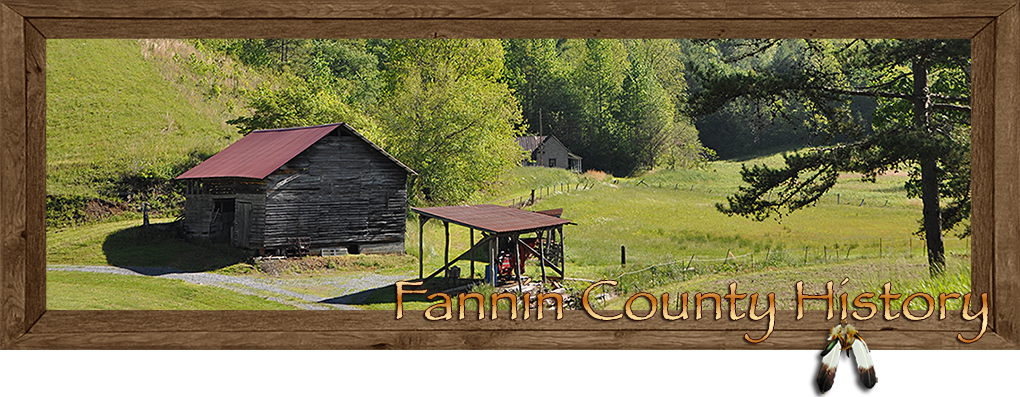Brief History of Fannin County Georgia
Fannin County is steeped in a rich history of early American settlement and ancient folklore. Founded in 1854 from portions of Union and Gilmer County, Fannin County was once the homeland of the Cherokee People with some descendants of this noble people still residing there today. The county was named in honor of Colonel James Fannin a hero in the Texas War for Independence.
Magical folklore abounds in Fannin County. One of its many tales based in fable is that of the tangible stone mineral know as Fairy Crosses. Once abundant throughout the soils of Fannin County these unique stones bare the image of a cross. The stone was once thought to bring good luck to it possessors. In one tale it is said that at the time of Jesus' crucifixion the ancient fairies of these mountain lands began to cry after hearing of His sacrifice. It is also said that when their tears hit the ground they formed small stone crosses giving name to these staurolite stone as "fairy crosses." The Blue Ridge Highlander's very own Nathanael O. Smith has his own personal account concerning this story about the fairy cross folk tale entitled "The Tears of Fairies." This particular tale has grown highly popular over the years.
Historical records show that a few white settlers arrived in this region of the mountains from the northern United States around 1790, yet it wasn't until after the 1830's tragic exodus of the Cherokee People known as the "Trail of Tears," that larger numbers of white settlers began moving into the area both to farm and dig for gold, which was followed by area copper mining. Unfortunately, the big fortunes that were being made in the area were by the logging barons as they stripped the mountain slopes and ridges of its precious timber and the copper company as they mined and smelted a rich vein of copper that led to an environmental disaster around the turn of the 20th century. With so many natural resources being harvested, it was only a matter of time before the railroad arrived at the turn of the century catapulting Fannin County into a premier mountain tourist attraction.
At the turn of the century a new resource was discovered in the county and before long it became a new venue for tourism. That new resource of plenty was the local mineral springs. The rejuvenating waters of these mineral springs were a big draw to the newly constructed hotels that were being built along the rail line through the new county seat of Blue Ridge. This demand for health benefits ushered in a prosperous tourism trade to Fannin County.
In the early 1900's the Tennessee Valley Authority arrived damming up the lower county reaches of the Toccoa River forming the beautiful scenic waters of Lake Blue Ridge. After the dam completion the lake's cool refreshing mountain waters began to draw an even greater tourism market to the already popular mineral spring attraction in the county.
A wealth of history for Fannin County can be found at the historical Baugh House, now housing the Fannin County Heritage Foundation, located at 411 West First Street in downtown Blue Ridge. The Baugh House was originally built by James Baugh in 1890, and is one of many turn-of-the-century architectural structures in historic downtown Blue Ridge.
Click here for more history on Fannin County...
Click here to continue exploring Blue Ridge and the Fannin County Countryside...
Fannin County Welcome Center in Blue Ridge Georgia |
|
Art Galleries & Shopping in Blue Ridge Georgia |
|
|
We encourage you to visit, check out our supplies. “Art, We are it!” |
|
Lodging Fannin County in the North Georgia Mountains |
|
Adventure in and around Blue Ridge Georgia |
|
Entertainment in Blue Ridge Georgia |
|


